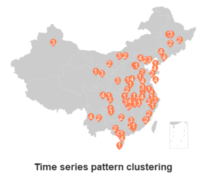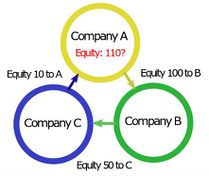Project Groups
|
|
|
|
|
|
Project Groups
Please change Your Team name to your project topic and change student name to your own name
| Project Team | Project Title/Description | Project Artifacts | Project Member | ||||||||||||||||||||||||||||||||||||||||||||||||||||||||||||||||||||||||||||||||||||||||||||||||||||||||||||||||||||||||||||||
|---|---|---|---|---|---|---|---|---|---|---|---|---|---|---|---|---|---|---|---|---|---|---|---|---|---|---|---|---|---|---|---|---|---|---|---|---|---|---|---|---|---|---|---|---|---|---|---|---|---|---|---|---|---|---|---|---|---|---|---|---|---|---|---|---|---|---|---|---|---|---|---|---|---|---|---|---|---|---|---|---|---|---|---|---|---|---|---|---|---|---|---|---|---|---|---|---|---|---|---|---|---|---|---|---|---|---|---|---|---|---|---|---|---|---|---|---|---|---|---|---|---|---|---|---|---|---|---|---|---|
|
World Development Indicators: A New Visual Perspective World Development Indicators (WDI) database is an extensive and holistic compilation of data by the World Bank on global development. It covers 20 topics with more than 1,300 time series development indicators featuring 214 nations and 38 country group consist of 7,902,367 data points. The main challenge here is to provide a holistic visual dashboard to allow students, policymakers, analysts and officials to perform proper analyse and provide insights out of the data points available. Most of the visualization available for WDI data are represented in the form of 1 to 2-dimensional data rendered on a geospatial map across a time series animation. Such visual representations mostly require the need to switch between different form of visuals (either in a single dashboard or different page) to understand the overall data presented to them, making it difficult to generate insights in a single view. Our group is motivated to develop a visual application to study the World Development Indicators across time and countries and observe correlations (if any) between the topics or indicators selected. Therefore, the main objective of the team is to explore a new visualization method to provide a holistic view of the WDI database using a single visual graphical representation. |
| ||||||||||||||||||||||||||||||||||||||||||||||||||||||||||||||||||||||||||||||||||||||||||||||||||||||||||||||||||||||||||||||||
|
Environmental Criminology: The Missing "W" in Whodunnit Environmental Criminology, an approach first developed in the 1980s, involves the study of geospatial and contextual elements in relation to crime. These elements could involve aspects such as victim movement, and spatial-temporal patterns in the occurrence of crimes. Through the exploration of a crime record dataset provided by the Los Angeles Poice Department (LAPD), this project aims to provide a layman's view of criminology through the lens of geospatial-themed and statistical visual analytics. <motivation> <features> |
| ||||||||||||||||||||||||||||||||||||||||||||||||||||||||||||||||||||||||||||||||||||||||||||||||||||||||||||||||||||||||||||||||
|
Group 3: Application of Geographical Weighted Regression |
Building a geo-visualization application to analyse district economy in east region of China with geographically weighted regression (GWR) technique Geospatial analysis was developed for problems in the environmental and life sciences, which has currently extended to almost all industries including economy, defence, utilities, social sciences, and public safety. The application of geo-visualization using geographically weighted regression (GWR) is an exploratory technique mainly intended to indicate where non-stationarity is taking place on the map. It is a good exploratory analytical tool which creates a set of location based parameter estimates, able to be mapped and analysed to give spatial information for the relationship of explanatory variables and response variable.
|
| |||||||||||||||||||||||||||||||||||||||||||||||||||||||||||||||||||||||||||||||||||||||||||||||||||||||||||||||||||||||||||||||
|
Group 4: A tale of Bitcoin |
Ever wonder how far bitcoin value could go? Bitcoin has recently garnered mixed reviews from two extreme ends. From China banning bitcoin to Chicago Mercantile Exchange supporting the futures trading of bitcoin. And there are plenty more views from big investment banks as well as regulators. All these recent excitement is due to bitcoin’s value rising more than 700% since the start of January 2017.
|
| |||||||||||||||||||||||||||||||||||||||||||||||||||||||||||||||||||||||||||||||||||||||||||||||||||||||||||||||||||||||||||||||
|
How civil aviation contributes to the “Belt and Road” initiative? The Belt and Road (B&R) refers to the land-based "Silk Road Economic Belt" and the seagoing "21st Century Maritime Silk Road". The routes cover more than 60 countries and regions from Asia to Europe via Southeast Asia, South Asia, Central Asia, West Asia and the Middle East. The B&R countries currently accounting for around 31% of global GDP and more than 34% of the world's merchandise trade. Unveiled in 2013, the strategy underlines China's push to take a larger role in global affairs with a China-centered trading network. The Belt and Road initiative is set to reinvigorate the seamless flow of capital, goods and services between Asia and the rest of the world, by promoting further market integration and forging new ties among communities.
|
| ||||||||||||||||||||||||||||||||||||||||||||||||||||||||||||||||||||||||||||||||||||||||||||||||||||||||||||||||||||||||||||||||
|
Use the air quality indicators to save us On Nov 4th, Beijing Environmental Protection Agency released the news, owing to the adverse weather conditions and early winter heating as well as other factors, it is expected that there will be a continuous 4-day regional heavily polluted air quality in Beijing-Tianjin-Hebei and surrounding areas on November 4th, in addition, the air quality in some cities may reach serious pollution level….
|
| ||||||||||||||||||||||||||||||||||||||||||||||||||||||||||||||||||||||||||||||||||||||||||||||||||||||||||||||||||||||||||||||||
|
Bike Sharing Pronto Cycle Share, branded as Pronto!, was a public bicycle sharing system in Seattle, Washington, that operated from 2014 to 2017. The system, owned initially by a non-profit and later by the Seattle Department of Transportation, included 58 stations in the city's central neighbourhoods and above 500 bicycles. Bike-sharing is a short distance transportation for people to make their life more convenient. When people use shared-bike, they can borrow and return bikes at any stations in the service station. Some stations have too many incoming bike and get jammed without enough docks for upcoming bikes, while some other stations get empty quickly and lack enough bikes for people to check out. Which station has the most passenger flow? In our project, we calculate the in degree an out degree for each station, to help user to understand how passenger usually use bike sharing service through each station point. We also divided time range into different periods, the data users can see much more details in yearly, monthly, even hourly. So that they can understand better the bike usage pattern. How to re-distribute bike at a lower cost? Because passenger will take the bike from one station to another station everyday, Company should ask employees to re-distribute bike among existent stations. In our project, we use the real map, cooperated with the degree data calculated before, to visualize a shortest path to help employees re-distribute bike in a more efficient way. |
| ||||||||||||||||||||||||||||||||||||||||||||||||||||||||||||||||||||||||||||||||||||||||||||||||||||||||||||||||||||||||||||||||
|
Time Series Explorer: CPI Index Use Case Analysis Time-series data has always played an important role in understanding and evaluating past behaviours. The usage of time-series information has allowed companies and organizations to tune their operations instead of simply improving by trial and error. It helps to describe and explore the hidden data patterns that have occurred over time, and with these insights, predict the future likelihoods of revenues and profits. At a country level, we can explore living standards of citizens by understanding the factors affecting their day-to-day lives. One of the important example measures that can allow us to get a glimpse would be the Consumer Price Index (CPI). Understanding the CPI and its short-term forecasts can have deep ramifications. It is often used for tuning Governmental policies to steer inflation rates in countries like Singapore and for foreign investors to consider allocating potential investment funds into the country. However, exploring the present CPI values provide limited information and its value lies in its forecast. Given the myriad possibilities of how the market forces work, the CPI can be difficult to predict, especially in the long term. Analysts who are interested in the country’s growth and outlook would need to apply many variations of parameters to find the forecast that is nearest to its future realization. To tackle this difficulty, we propose to create an easy-to-use time-series exploration system that is accessible even to the uninitiated analyst. The system should allow exploratory functions to decompose the CPI time series data to its constituent parts, namely Seasonality, Trend, and Random (Noise). It should also generate several potential forecasting models (such as Exponential Smoothing and ARIMA) to predict the CPI using a combination of predetermined parameters and grid search optimization. The system will be programmed using the R Shiny package, and several useful supportive packages such as: Lubridate and Timetk (for date-time data manipulation), Forecast and Sweep (for easy forecasting), and ggplot2 (for amazing time-series visualizations). Our system also allows other forms of time series data to be displayed and their forecasts compared using the given forecasting methods, within certain format restrictions. Other example time-series data sources that are supported could include Singapore import/export prices, currency exchange rate information with other countries, and even Singapore Certificate-of-Entitlement (COE) price changes. |
| ||||||||||||||||||||||||||||||||||||||||||||||||||||||||||||||||||||||||||||||||||||||||||||||||||||||||||||||||||||||||||||||||
|
Group 10:China Property Trend |
China property analysis The real-estate market is ever growing and has more stakeholders. We are here to build an app that makes an analysis of the housing prices market an easy and effective one by just a few clicks and hovering around. This way allowing the major stakeholders perform their analysis and plan their decisions more efficiently. We have used various packages such as'Recharts','Timekt','Sweep','ggplot2' that allowed users to model and visualize the housing prices indexes in different ways for different purposes. Time Series Analysis-The application will allow the user to choose the City they are interested in and the time period they want to look at. The trend of the prices during that period will be provided.This is built for analysts and agents and government officials who would like to know on the performance at a certain period of time and also a comparative study between different cities. This way they can find any outliers or a particular pattern in the indices. The time series is related to the economic policy and the effect is stressed based on the chosen policy time period. Cluster Analysis – We further develop some clusters of the cities based on their housing index reaction. This way we can group the cities whose housing market behave/ respond to the market in a similar way. The government officials and the local agents understand the markets better and plan their policies better. A waiver or cluster development centric policy can be made by the government. Forcast Analysis: Forecast analysis is done using Geofacet that we can compare the forecasted prices between the different region of the country. Geofaceting arranges a sequence of plots of data for different geographical entities into a grid that strives to preserve some of the original geographical orientation of the entities. This app can be applied to any other economic variable in China. This will be greatly helpful for economists, agents and government officials to look into the specific data and make some judgments and decisions based on it. |
| |||||||||||||||||||||||||||||||||||||||||||||||||||||||||||||||||||||||||||||||||||||||||||||||||||||||||||||||||||||||||||||||
|
Group 11: Spatial Analysis of Crime in England & Wales |
Spatial Analysis of Crime in England & Wales The aim of this paper is to investigate the spatial variation of crime across different districts in England and Wales, and the relationship between crime and socio-economic characteristics for each district. As it is common for neighbouring areas to have correlation in their crime rate, we compare the use of geographically weighted regression (GWR) and conventional (or global) multiple regression model to see whether a better result can be obtained from GWR. We will also investigate whether there are certain variables that have an impact on crime rate in one area but not in another. Local governments may use this information to come up with better policies to tackle crime.
|
| |||||||||||||||||||||||||||||||||||||||||||||||||||||||||||||||||||||||||||||||||||||||||||||||||||||||||||||||||||||||||||||||
|
Group 12:Cross Shareholding |
Cross Shareholding Cross shareholding is a situation in which a corporation owns stock in another company. So, technically, corporations own securities issued by other corporations. Cross shareholding can lead to double counting, whereby the equity of each company is counted twice when determining value. When double counting occurs, the security's value is counted twice, which can result in estimating the wrong value of the two companies. Cross shareholding is very common in corporate world. Sometimes, there can be more than 10 companies involved and it is very difficult for investors and regulators to track who owns how much. In this project, our group choose 1 or 2 big groups of companies from Korea and China with heavy cross shareholding between each other and conduct visualization and relationship analysis on their networks using R-Shiny so that people can have better picture of these companies’ network and easier to understand relationship between companies. |
| |||||||||||||||||||||||||||||||||||||||||||||||||||||||||||||||||||||||||||||||||||||||||||||||||||||||||||||||||||||||||||||||
|
|||||||||||||||||||||||||||||||||||||||||||||||||||||||||||||||||||||||||||||||||||||||||||||||||||||||||||||||||||||||||||||||||






